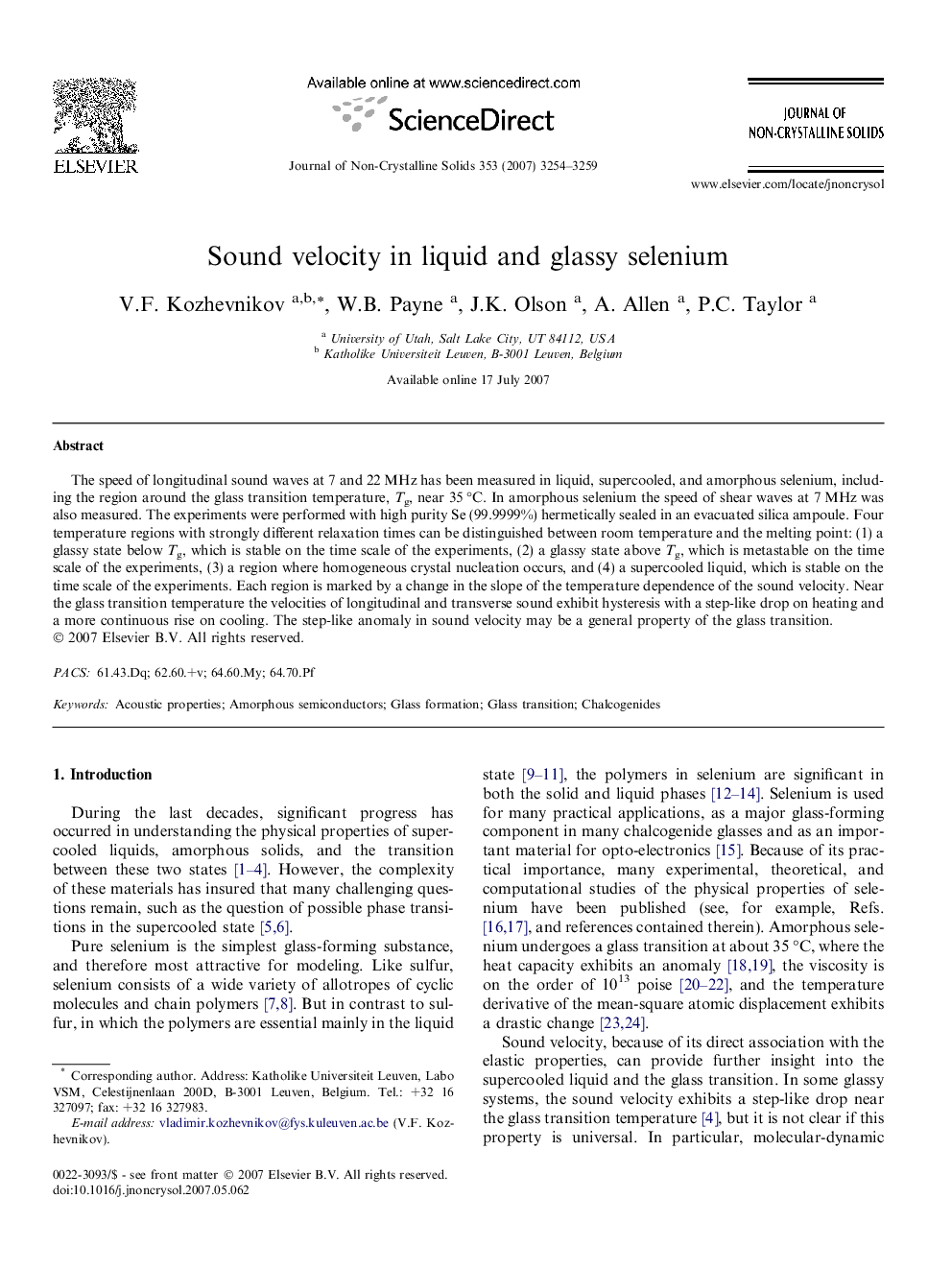| Article ID | Journal | Published Year | Pages | File Type |
|---|---|---|---|---|
| 1483333 | Journal of Non-Crystalline Solids | 2007 | 6 Pages |
Abstract
The speed of longitudinal sound waves at 7 and 22 MHz has been measured in liquid, supercooled, and amorphous selenium, including the region around the glass transition temperature, Tg, near 35 °C. In amorphous selenium the speed of shear waves at 7 MHz was also measured. The experiments were performed with high purity Se (99.9999%) hermetically sealed in an evacuated silica ampoule. Four temperature regions with strongly different relaxation times can be distinguished between room temperature and the melting point: (1) a glassy state below Tg, which is stable on the time scale of the experiments, (2) a glassy state above Tg, which is metastable on the time scale of the experiments, (3) a region where homogeneous crystal nucleation occurs, and (4) a supercooled liquid, which is stable on the time scale of the experiments. Each region is marked by a change in the slope of the temperature dependence of the sound velocity. Near the glass transition temperature the velocities of longitudinal and transverse sound exhibit hysteresis with a step-like drop on heating and a more continuous rise on cooling. The step-like anomaly in sound velocity may be a general property of the glass transition.
Keywords
Related Topics
Physical Sciences and Engineering
Materials Science
Ceramics and Composites
Authors
V.F. Kozhevnikov, W.B. Payne, J.K. Olson, A. Allen, P.C. Taylor,
